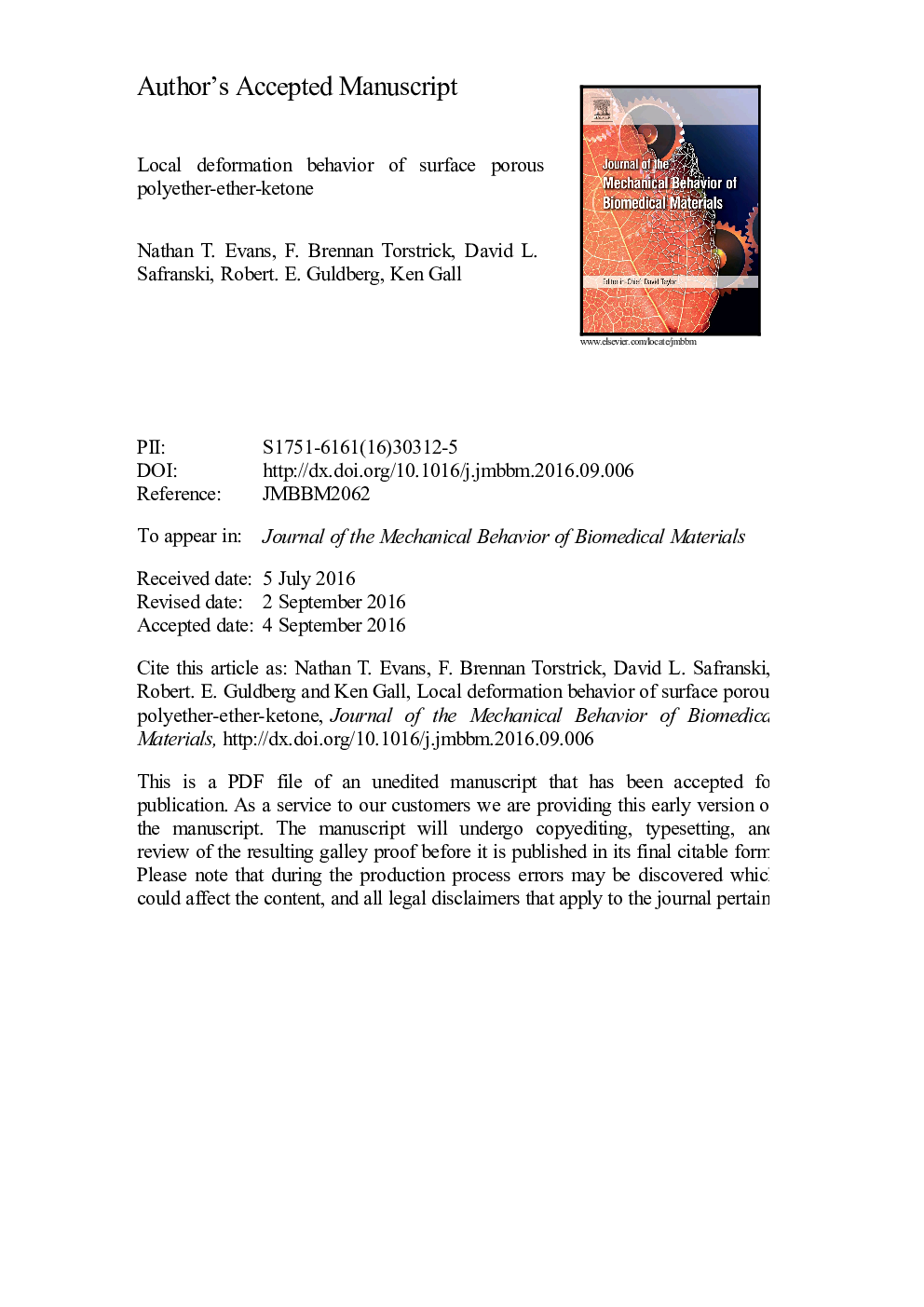| Article ID | Journal | Published Year | Pages | File Type |
|---|---|---|---|---|
| 7207569 | Journal of the Mechanical Behavior of Biomedical Materials | 2017 | 32 Pages |
Abstract
Surface porous polyether-ether-ketone has the ability to maintain the tensile monotonic and cyclic strength necessary for many load bearing orthopedic applications while providing a surface that facilitates bone ingrowth; however, the relevant deformation behavior of the pore architecture in response to various loading conditions is not yet fully characterized or understood. The focus of this study was to examine the compressive and wear behavior of the surface porous architecture using micro Computed Tomography (micro CT). Pore architectures of various depths (~0.5-2.5 mm) and pore sizes (212-508 µm) were manufactured using a melt extrusion and porogen leaching process. Compression testing revealed that the pore architecture deforms in the typical three staged linear elastic, plastic, and densification stages characteristic of porous materials. The experimental moduli and yield strengths decreased as the porosity increased but there was no difference in properties between pore sizes. The porous architecture maintained a high degree of porosity available for bone-ingrowth at all strains. Surface porous samples showed no increase in wear rate compared to injection molded samples, with slight pore densification accompanying wear.
Related Topics
Physical Sciences and Engineering
Engineering
Biomedical Engineering
Authors
Nathan T. Evans, F. Brennan Torstrick, David L. Safranski, Robert E. Guldberg, Ken Gall,
